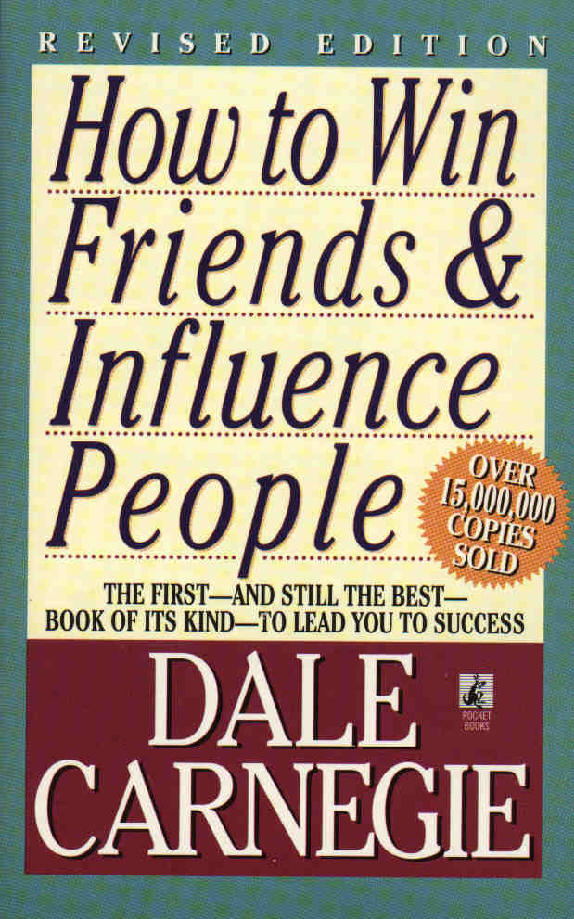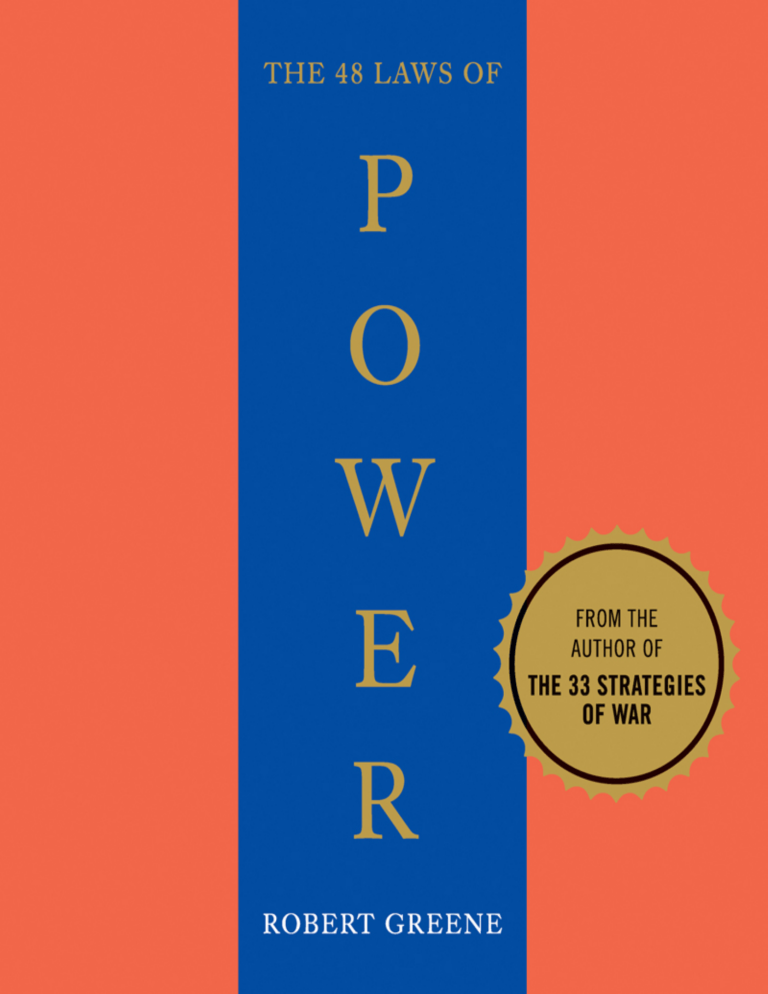Table of Contents
In this How To Win Friends Book Summary we take a look at Dale Carnegie’s How to Win Friends and Influence People, a timeless guide to improving social skills and building meaningful relationships.
Introduction
Published in 1936, the book quickly became a sensation, selling millions of copies worldwide and establishing itself as one of the best-selling books of all time. The book’s enduring appeal lies in its practical, actionable advice based on universal human desires and needs.
“You can make more friends in two months by becoming interested in other people than you can in two years by trying to get other people interested in you.”
This book summary explores the key principles and techniques outlined in How to Win Friends and Influence People.
Part One: Fundamental Techniques in Handling People
The foundation of Carnegie’s approach to human relations rests on three fundamental principles:

- Don’t criticize, condemn, or complain. Human nature resists criticism. Instead of fostering positive change, it often breeds resentment and defensiveness.
- Give honest and sincere appreciation. Everyone craves appreciation and recognition. Genuine appreciation can inspire individuals to reach their full potential and forge strong, lasting bonds.
- Arouse in the other person an eager want. To influence others effectively, focus on their desires and demonstrate how to fulfill them. By understanding and addressing their wants, you can motivate them to act in ways that benefit both parties.
Part Two: Six Ways to Make People Like You
Carnegie provides six practical ways to cultivate likability and foster positive connections with others:

- Become genuinely interested in other people. Genuine interest is the cornerstone of any successful relationship. When you take a sincere interest in others’ lives, you create a sense of connection and demonstrate respect.
- Smile. A simple smile is a powerful tool. It conveys warmth, friendliness, and approachability.
- Remember that a person’s name is to that person the sweetest and most important sound in any language. Using a person’s name demonstrates respect and shows that you value them as an individual.
- Be a good listener. Encourage others to talk about themselves. Being a good listener is essential for building rapport. When you actively listen, you make the other person feel heard and understood.
- Talk in terms of the other person’s interests. People are naturally drawn to those who share their interests. By engaging in conversations about topics that matter to them, you can create a foundation for connection and build rapport.
- Make the other person feel important – and do it sincerely. Everyone wants to feel valued and appreciated. By acknowledging their strengths and contributions, you can foster a sense of importance and strengthen the relationship.
“It is the individual who is not interested in his fellow men who has the greatest difficulties in life and provides the greatest injury to others. It is from among such individuals that all human failures spring.”
Part Three: How to Win People to Your Way of Thinking
Persuasion is a delicate art. Carnegie outlines twelve principles for influencing others without causing offense:

- The only way to get the best of an argument is to avoid it. Engaging in arguments rarely leads to productive outcomes. It often creates tension and damages relationships.
- Show respect for the other person’s opinions. Never say, “You’re wrong.” Disagreement doesn’t have to be confrontational. Respecting differing viewpoints fosters open communication and allows for productive dialogue.
- If you’re wrong, admit it quickly and emphatically. Admitting fault demonstrates humility and helps to de-escalate conflict.
- Begin in a friendly way. Creating a positive atmosphere fosters cooperation and receptivity.
- Get the other person saying “yes, yes” immediately. Building consensus through agreement on smaller points can pave the way for acceptance of larger ideas.
- Let the other person do a great deal of the talking. People are more receptive to ideas they feel they’ve contributed to. Active listening and encouragement create space for others to express themselves.
- Let the other person feel that the idea is his or hers. People are more likely to embrace ideas they believe are their own. Guiding others to discover solutions for themselves can lead to greater buy-in and commitment.
- Try honestly to see things from the other person’s point of view. Empathy is crucial for understanding and resolving conflict. Considering the other person’s perspective allows for finding common ground and reaching mutually beneficial solutions.
- Be sympathetic with the other person’s ideas and desires. Showing empathy and understanding validates the other person’s feelings and fosters a sense of connection.
- Appeal to the nobler motives. Most people are driven by a desire to do good. Appealing to higher ideals can inspire individuals to act in accordance with their values.
- Dramatize your ideas. Presenting information in a vivid and engaging way captures attention and makes it more memorable.
- Throw down a challenge. People are motivated by a desire to prove their worth and achieve goals. Presenting a challenge can inspire individuals to rise to the occasion and strive for excellence.
“If you argue and rankle and contradict, you may achieve a victory sometimes; but it will be an empty victory because you will never get your opponent’s good will.”
Part Four: Be a Leader: How to Change People Without Giving Offense or Arousing Resentment
Effective leadership requires the ability to guide and inspire others without causing resentment. Carnegie provides insights into fostering positive change:

- If you must find fault, this is the way to begin. Instead of directly criticizing, start by acknowledging the individual’s positive qualities and expressing appreciation for their efforts.
- Call attention to people’s mistakes indirectly. Instead of directly pointing out errors, subtly guide the individual towards recognizing and correcting their mistakes on their own.
- Talk about your own mistakes before criticizing the other person. Acknowledging your own fallibility demonstrates humility and makes criticism easier to accept.
- Ask questions instead of giving direct orders. Empowering others to find solutions fosters ownership and encourages initiative.
- Let the other person save face. Preserving dignity and avoiding public humiliation is essential for maintaining positive relationships.
- Praise the slightest improvement and praise every improvement. Be “hearty in your approbation and lavish in your praise.” Positive reinforcement encourages growth and motivates continued effort.
- Give the other person a fine reputation to live up to. People often strive to meet the expectations set for them. By expressing confidence in their abilities, you can inspire individuals to reach their full potential.
- Make the other person happy about doing the thing you suggest. Fostering a sense of enthusiasm and ownership increases buy-in and encourages positive action.
“A drop of honey catches more flies than a gallon of gall.”
Conclusion
Dale Carnegie’s How to Win Friends and Influence People provides a roadmap to building meaningful relationships, winning people over to your way of thinking, and becoming a more effective leader.
The principles outlined in the book are timeless and universally applicable. While the book was published almost a century ago, its insights into human nature and the art of connecting with others remain relevant and impactful today.
By embracing these principles and putting them into practice, you can cultivate a richer, more fulfilling personal and professional life.
“The only way to get the best of an argument is to avoid it.”
Who should read How to Win Friends and Influence People?
Individuals Seeking Personal Growth
- Those struggling with social anxiety or shyness: The book provides practical advice on overcoming self-consciousness and building confidence in social situations.
Principles such as smiling, becoming genuinely interested in others, and remembering names can help individuals feel more comfortable and build stronger connections.
- Individuals looking to improve their communication skills: The book emphasizes the importance of clear, empathetic communication. Principles like active listening, respecting others’ opinions, and speaking in terms of the other person’s interests can enhance both personal and professional relationships.
- Anyone seeking to build stronger, more meaningful relationships: The book’s emphasis on genuine interest, sincere appreciation, and understanding others’ perspectives can help foster deeper connections with friends, family, and romantic partners.
Professionals in Various Fields
- Leaders and managers: The book’s principles on leadership, motivation, and team building can help leaders inspire and guide their teams effectively.
Techniques like praising improvement, giving employees a fine reputation to live up to, and making them happy about doing the work can boost morale and productivity.
- Salespeople and negotiators: The book’s focus on understanding and addressing the other person’s wants and needs is crucial for successful sales and negotiations.
Techniques like finding common ground, letting the other person do the talking, and making suggestions rather than issuing orders can lead to more favorable outcomes.
- Educators and mentors: The book’s insights on human behavior and effective communication can help educators and mentors connect with their students and guide them toward success.
Principles like praising improvement and encouraging students to take ownership of their learning can foster a more positive and productive learning environment.
Anyone Navigating Everyday Interactions
- Parents and caregivers: The book’s principles on handling children and encouraging positive behavior can be valuable for parents and caregivers.
Techniques like understanding a child’s perspective, appealing to their nobler motives, and letting them save face can help build strong relationships and foster cooperation.
- Individuals dealing with conflict resolution: The book provides strategies for managing disagreements effectively and minimizing conflict.
Techniques like avoiding arguments, respecting others’ opinions, and seeing things from the other person’s point of view can help de-escalate tense situations and find mutually acceptable solutions.
- Anyone simply looking to improve their interactions with others: The book’s principles and techniques can be applied to any social situation, from casual conversations to professional networking events.
By focusing on building rapport, showing genuine interest, and making others feel important, individuals can enhance their overall social skills and build more positive relationships.
In essence, How to Win Friends and Influence People is a valuable resource for anyone who wants to improve their communication skills, build stronger relationships, and navigate the complexities of human interaction more effectively.
You can also read 8 powerful quotes from How To Win Friends and Influence People

Liked How To Win Friends book summary? Read other book summaries here
You may also like:







Leave a Reply